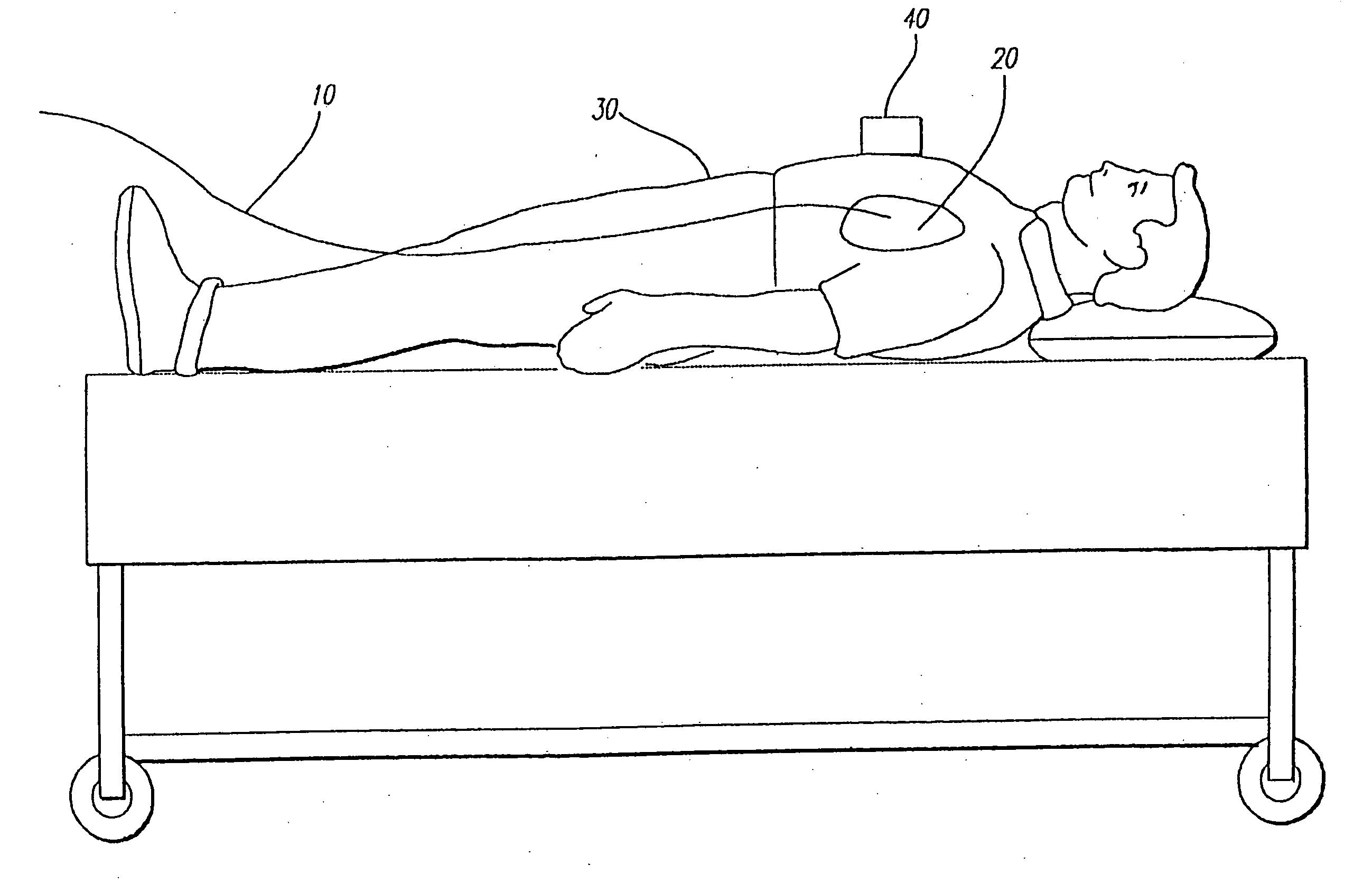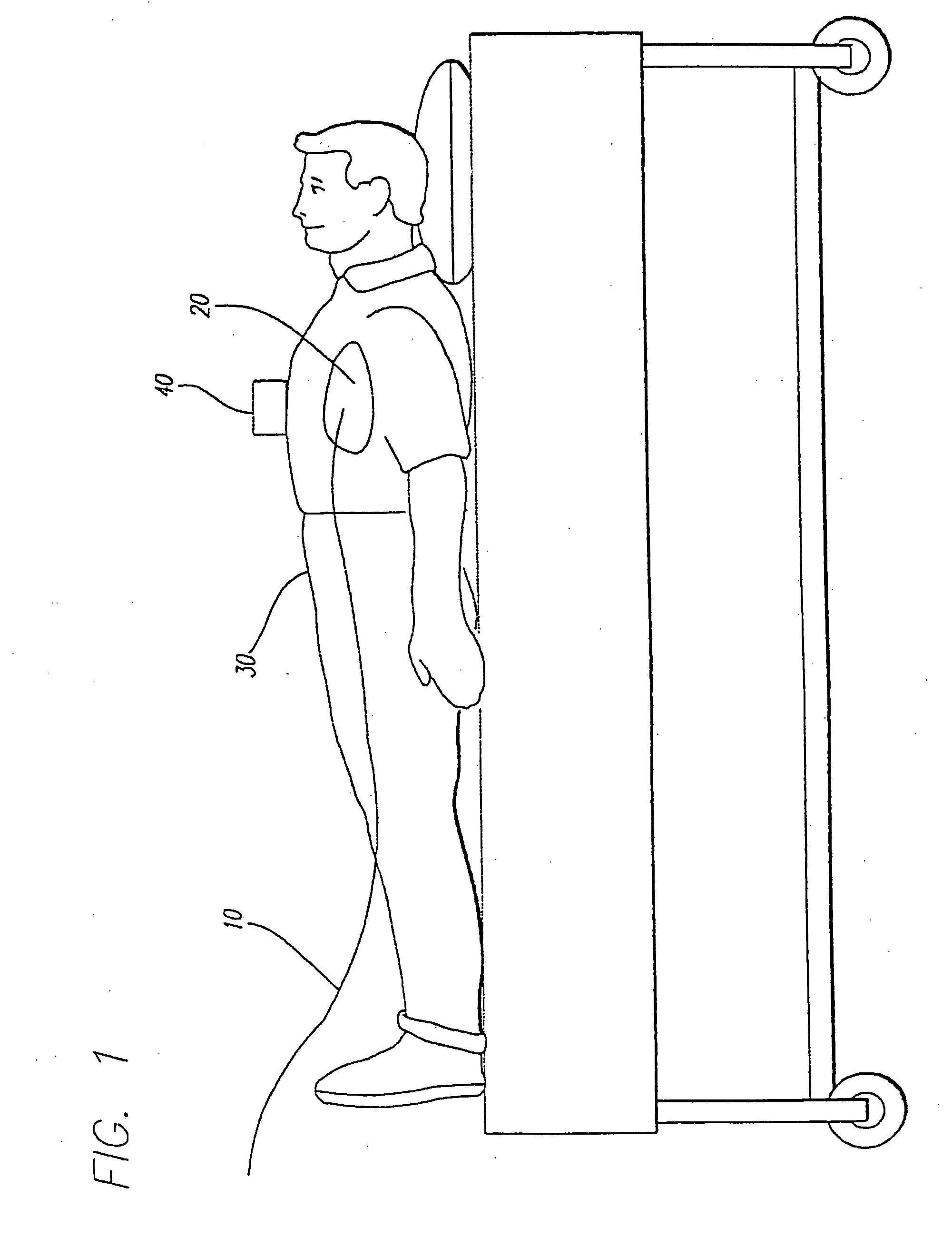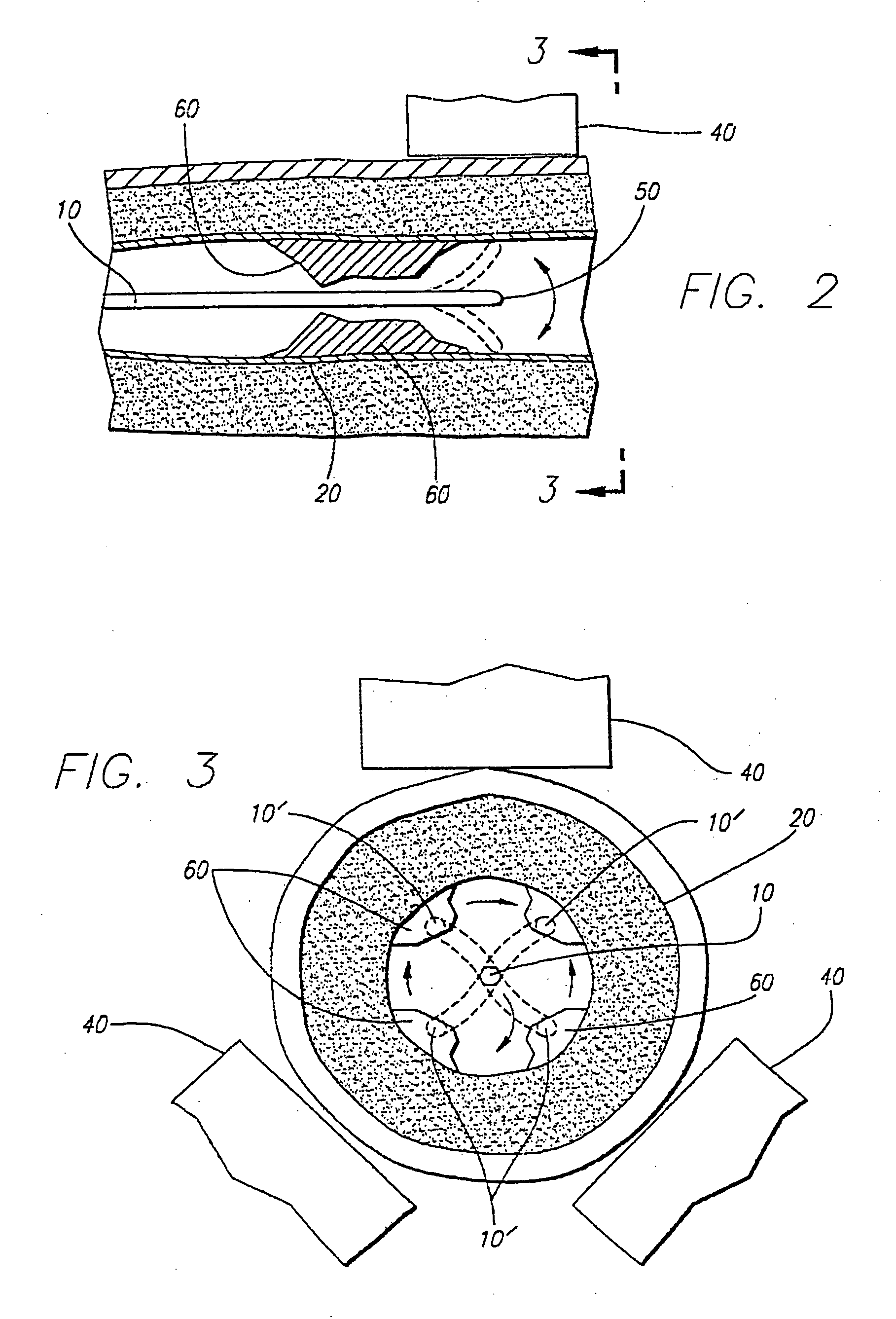Apparatus and method for inducing vibrations in a living body
a technology of living body and apparatus, applied in the field of medical devices, can solve the problems of reducing the effectiveness of guidewires and catheters that transmit vibrating energy to intravascular sites, reducing reducing the effectiveness of intravascularly introduced intravascular devices, etc., to achieve the effect of enhancing the ability of intravascularly introduced intrabody devices, speeding up drug delivery and/or penetration and absorption, and enhancing the action of lysing
- Summary
- Abstract
- Description
- Claims
- Application Information
AI Technical Summary
Benefits of technology
Problems solved by technology
Method used
Image
Examples
Embodiment Construction
[0019] The present invention addresses the need for physicians and other medical personnel to be able to induce vibrations at a localized target site within a patient's body for any number of purposes, such as breaking up a thrombus or enhancing the action of medical drugs. The present invention provides a method for inducing vibrations in a manner that is simpler, safer, and more efficient and effective that previously known in the art.
[0020] With reference to FIG. 1, the method of the present invention entails the placement of an object 10 to be vibrated in proximity to the target site 20 within the patient's body 30. The object may be an intravascular device introduced to the target site through the patient's vasculature, such as a guidewire (as shown in FIG. 1), a catheter, or a similar device. However, the method of the present invention may be employed equally efficaciously with other types of devices, including immobile devices such as stents, oils, clot traps, and filters, ...
PUM
 Login to View More
Login to View More Abstract
Description
Claims
Application Information
 Login to View More
Login to View More - R&D
- Intellectual Property
- Life Sciences
- Materials
- Tech Scout
- Unparalleled Data Quality
- Higher Quality Content
- 60% Fewer Hallucinations
Browse by: Latest US Patents, China's latest patents, Technical Efficacy Thesaurus, Application Domain, Technology Topic, Popular Technical Reports.
© 2025 PatSnap. All rights reserved.Legal|Privacy policy|Modern Slavery Act Transparency Statement|Sitemap|About US| Contact US: help@patsnap.com



